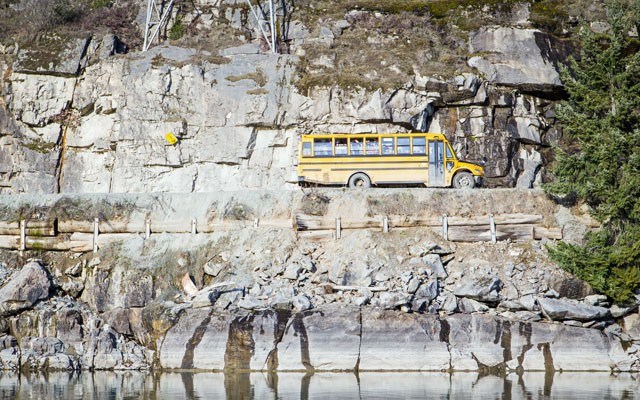While still in the very early stages, a feasibility study by the provincial government could have major implications for tourism in the Sea to Sky.
The 5 Nations Highway project proposes vast improvements to the in-SHUCK-ch and Harrison West Forest Service Road, which extends 160 kilometres between Highway 99 east of Pemberton and Highway 7 near Mission in the Fraser Valley.
If completed, the highway would complete an attractive, scenic circle route for tourists — and make it safer for locals.
A spokesperson for the provincial government confirmed that the feasibility study is under way, and that a commitment to upgrade the in-SHUCK-ch road is under review as part of treaty negotiations with the in-SHUCK-ch First Nation.
But local MLA and former mayor of Pemberton Jordan Sturdy said the idea has been floating around for decades.
"I've lived in Pemberton long enough that I've experienced at least three occasions where the highway was closed at length," Sturdy said.
"A true alternate route back to the Lower Mainland would be of tremendous value to the corridor."
The road — a slow-moving, summer-only access prone to washouts and closures — would be upgraded to a two-lane, two-wheel-drive, all-season road.
Squamish-Lillooet Regional District board chair and Whistler Councillor Jack Crompton agreed that the project would be beneficial to the region in more ways than one.
"The realization of the 5 Nations Highway would grow our tourism market, would grow our tourism product and provide a viable secondary transportation route to and from Whistler," Crompton said.
"As far as the economics of it are concerned, every hour the Sea to Sky Highway is closed costs the corridor money, and another route would provide quick access from the Lower Mainland."
In a draft business case commissioned by the in-SHUCK-ch First Nation, the estimated cost of the upgrades is $85.7 million, to be completed in different sections over the next decade.
Eventually, the in-SHUCK-ch would like to see the entire stretch paved.
"We've always held the view that we can't be satisfied with that standard of road," said Gerard (Eppa) Peters, chief negotiator for the in-SHUCK-ch, of the current state of the road.
"But in fact, what we wanted to do was find the resources necessary to bring that up to a highway standard, which means paving the entire length from the Duffey Lake turnoff to Weaver Creek."
Finding those resources wouldn't be easy, which is where the concept of the 5 Nations was born.
The "5 Nations" refers to the in-SHUCK-ch — which is comprised of the Samahquam and Skatin — as well as the Xa'xtsa, the Lil'wat and the Sts'ailes.
"It won't be built in what I see as a practical term, which is seven to 10 years, unless everyone who has an interest in a project like that for their own reasons gets behind it," Peters said.
"So for me and mine, we need access — not just for visits to the doctor or getting our kids to school, or getting to the centres of commerce, we need it also for economic development."
The in-SHUCK-ch have been in treaty negotiations with the province since 1993. An agreement-in-principle was reached in 2013, and Peters expects all will be finalized by 2020 at the latest.
When the treaty is ratified, the in-SHUCK-ch will assume control of 104 square kilometres to develop as it pleases.
"If we are going to develop 104 square kilometres of land to any degree at all, what we need is good transportation access for our customers to come in, or assuming we build widgets and need raw materials brought in or shipped out, we need a good way to do that," Peters said.
"Getting land is one thing, but there is an absence of any sort of economy down there. There is virtually nothing. We're starting from a negative position."
But the benefits of the 5 Nations Highway go far beyond those who live in the valley.
"The fact is, such a circle route would serve, I think, the economic interests of Pemberton, of Whistler and of Squamish, assuming that someone wants to drive north of there and then make a circuit back down, through the Lillooet and Harrison lakes, ultimately to Harrison Hot Springs and to Chilliwack and Mission," Peters said.
If you add in the benefits of increased access to U.S. border crossings, the airport in Abbotsford and decreased traffic on the Sea to Sky Highway, "then I think this thing begins to define itself from a very positive point of view from practically anybody who cares to look at it," Peters said.
The economic and social implications for the First Nations in the Fraser Valley is exciting, Sturdy said.
"It's certainly something that I think would be good for the corridor and good for the nations, and it actually adds value and opportunity for a lot of different segments," he said.
"It's exciting. Let's hope we can get there."




